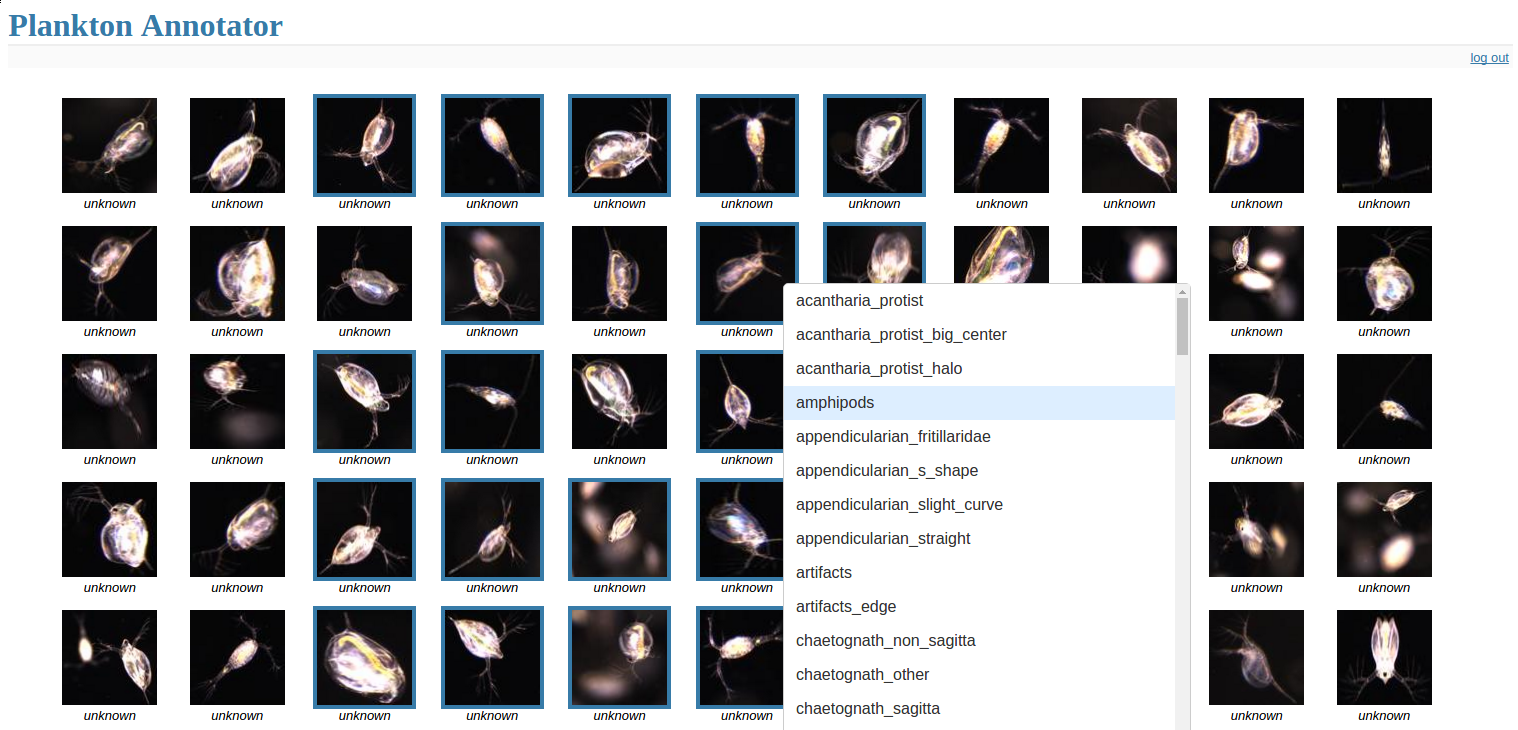Disclaimer: this is my first time writing more than a few lines of JavaScript (and for a purpose other than my own amusement), and as such there is probably too much copy-and-pasting and other bad practice in this project. Pull requests (and helpful comments) are welcome.
This is a small work-in-progress project aimed at helping some ecologist colleagues assign species labels to a collection of plankton images. The idea is that the collection of images is stored on a central server, to which collaborators can connect and label images by selecting groups of images and choosing the appropriate species.
With such a large number of images and the potential to collect many more, the design philosophy is centered around bulk annotation. It should be easy for the user to select a large number of images at once (such as by drag-to-select) and assign the same label to all of them. This means that loading and selecting images should be fast, and only minimal screen space should be used for purposes other than displaying images.
Some features currently still under development include:
- User authorization. Only authorized users should be allowed to change the database. Except where intellectual property rights are concerned, any user should be able to view the images in the database.
- Performance. It seems as though the jQuery
selectable's performance degrades significantly when working with more than a few tens of thousands of elements. Eventually we want to scale to approximately a million images (and perhaps even more), so this needs to be addressed. - Database design. The current database schema was designed with a simple proof-of-concept in mind. To be practically useful, we need to consult with the intended users, i.e., plankton ecologists.
The home screen shows as many images as we can realistically fit on the screen.

It is possible to select images by dragging or clicking. A right-click presents
the user with a context-menu to choose the appropriate species.

Often the visual cues necessary to distinguish between two species are very subtle.
With a double-click on the image, the user is presented with the image in its native
resolution along with additional information.

This project is still very much under development. The init_dummy_db.py
script is included to generate dummy data and populate a dummy database to
allow quick testing and development. Simply run
python init_dummy_db.py
python pyplankton.pyand then open http://127.0.0.1:5000/ in your browser.